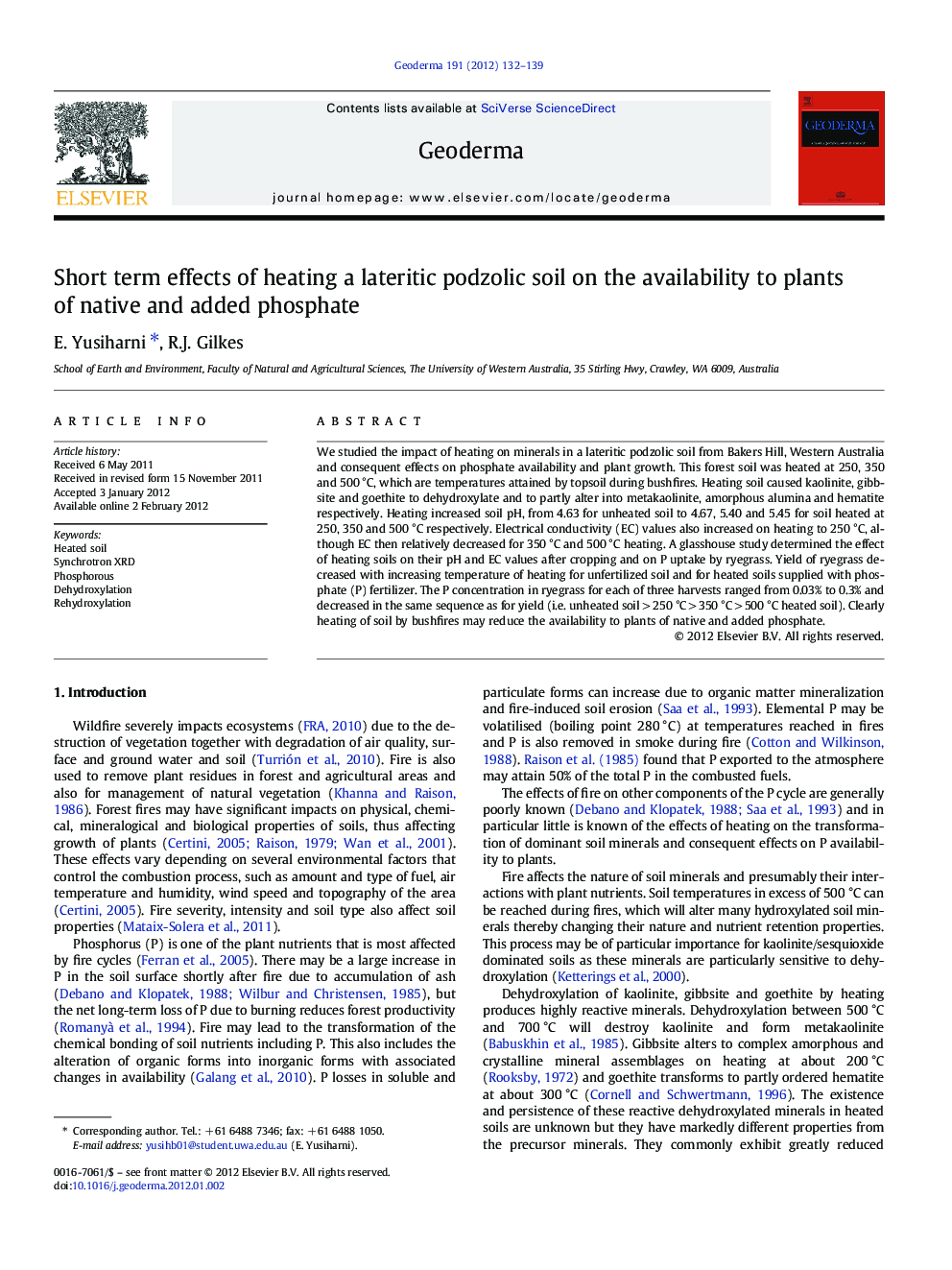| Article ID | Journal | Published Year | Pages | File Type |
|---|---|---|---|---|
| 4573715 | Geoderma | 2012 | 8 Pages |
We studied the impact of heating on minerals in a lateritic podzolic soil from Bakers Hill, Western Australia and consequent effects on phosphate availability and plant growth. This forest soil was heated at 250, 350 and 500 °C, which are temperatures attained by topsoil during bushfires. Heating soil caused kaolinite, gibbsite and goethite to dehydroxylate and to partly alter into metakaolinite, amorphous alumina and hematite respectively. Heating increased soil pH, from 4.63 for unheated soil to 4.67, 5.40 and 5.45 for soil heated at 250, 350 and 500 °C respectively. Electrical conductivity (EC) values also increased on heating to 250 °C, although EC then relatively decreased for 350 °C and 500 °C heating. A glasshouse study determined the effect of heating soils on their pH and EC values after cropping and on P uptake by ryegrass. Yield of ryegrass decreased with increasing temperature of heating for unfertilized soil and for heated soils supplied with phosphate (P) fertilizer. The P concentration in ryegrass for each of three harvests ranged from 0.03% to 0.3% and decreased in the same sequence as for yield (i.e. unheated soil > 250 °C > 350 °C > 500 °C heated soil). Clearly heating of soil by bushfires may reduce the availability to plants of native and added phosphate.
► Soil heating may cause significant impacts on mineralogical and chemical properties.► Availability of native and added P in soil may substantially affected by heating.► Soil heating caused kaolinite, gibbsite and goethite to dehydroxylate.► Heating increased soil pH and EC due to combustion of soil organic matter.
